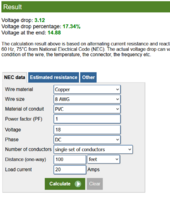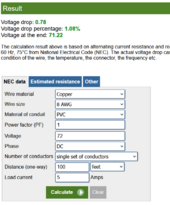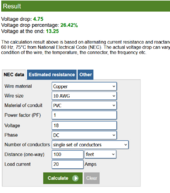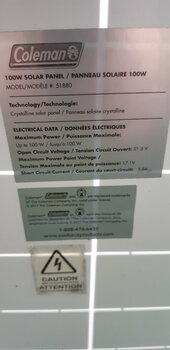Hello I'm and new to off grid systems an would love some help from someone more experienced then me. I have 4 x 100 watt 5amp panels, 2 x 300 watt wind generators with own charge controllers, 2 x 200 amp hr lifepo4 batteries, 1 x 3000 watt inverter and 1 x 30 amp Coleman charge controller, if any other info is needed about my system pls ask I'll do my best to give or find the right answer. I first had my panels on my roof but wasnt getting a lot of sun light exposure, since my off grid place is in the corner of a large feild I decided to move them out into the feild to get more sun exposure. Before I moved them i would see 20 to 22 amps coming in and would get a good charge but that was only for a short time due to lack of sun exposure, so now I have moved then panels out to the feild to find the best location to set up poles to have them permanently replaced and now I've moved them and I've changed the angles both ways to see if it increases my input and the best I can get now is 15amps for like an hr. My panels are set at a 40° angle as per my parallel location and are facing due south and I am currently running them in parallel with 10 gauge wire connecting each panel and then 8 gauge running from my panels to my charge controller, the distance is about 100ft away. From what I can find (pls remember I'm not very bright) the 8 gauge should be more then enough for the length of run and I know it's best to have the system inside or close to the cabin and mine is set up inside with proper ventilation for batteries. My wind generators charge controllers said weather proof so assumed there best set up at the wind generators so they are mounted just below them and running the 12v from there location to my set up also they will be moved once panels are set up on the poles as there going on to of the 50 ft poles to achieve maximum wind. I've now also read it's best to run my panels in series to maximize my charge(again remember I'm not bright here) but if I do that then I'd be sending 48v to a 12v system wouldn't that blow something up like my charge controller. So now all that being said can comekne dumb this down for me and help get the best solar charge from my panels I got now cause I cant seem to get my batteries to completely charge for 1 and 2 I'm understanding that my set up should be enough for my usage and I cant seem to get a full charge even on a clear sunny day. Thanks in advance for any and all help
You are using an out of date browser. It may not display this or other websites correctly.
You should upgrade or use an alternative browser.
You should upgrade or use an alternative browser.
Trying to maximize the charging of my system
- Thread starter dan81
- Start date
DIYrich
Solar Wizard
What are the voltage/current specs on your panels? I believe the Coleman Charge controller is looking for 17-22v with a max (Voc) of 25v.
MichaelK
Solar Wizard
Couple of serious mistakes here. First, you are using a PWM controller, which means the voltage of the panels needs to match that of battery bank. Secondly, you are positioning your panels 100 feet away with only 8 gauge wire to conduct the current. You are seeing a LOT of power loss because of voltage drop. Look at these numbers.

If that is a good solar location for you, you need to replace you controller immediately. Get a MPPT controller like Epever's Tracer 4210AN. If you wired all your panels in series instead of parallel, here is what you would get...
 The MPPT controller acts like a transformer, converting the high raw solar voltage down to battery charging voltage, converting the extra volts into extra charging amps. Keep in mind though that the 4210AN has a 100V limit, and you don't want to add more panels in series because the Voc will bump up above 100V.
The MPPT controller acts like a transformer, converting the high raw solar voltage down to battery charging voltage, converting the extra volts into extra charging amps. Keep in mind though that the 4210AN has a 100V limit, and you don't want to add more panels in series because the Voc will bump up above 100V.
Can you provide the panel specifications on the back of the panels, and what your winter lows are like? Depending on the those numbers, four in series could potentially be too high, and you'd want to upgrade to one of Epever's 150V controllers instead of the 4210AN. Get those numbers for us so we can refine our recommendations.


If that is a good solar location for you, you need to replace you controller immediately. Get a MPPT controller like Epever's Tracer 4210AN. If you wired all your panels in series instead of parallel, here is what you would get...
 The MPPT controller acts like a transformer, converting the high raw solar voltage down to battery charging voltage, converting the extra volts into extra charging amps. Keep in mind though that the 4210AN has a 100V limit, and you don't want to add more panels in series because the Voc will bump up above 100V.
The MPPT controller acts like a transformer, converting the high raw solar voltage down to battery charging voltage, converting the extra volts into extra charging amps. Keep in mind though that the 4210AN has a 100V limit, and you don't want to add more panels in series because the Voc will bump up above 100V.Can you provide the panel specifications on the back of the panels, and what your winter lows are like? Depending on the those numbers, four in series could potentially be too high, and you'd want to upgrade to one of Epever's 150V controllers instead of the 4210AN. Get those numbers for us so we can refine our recommendations.

Attachments
Last edited:
Oh wow yep I'm definitely loosing power due to my setup now, I'll be looking I to a new charge controller and most likely the 150v just to be safe and as for winter lows not sure what that means, probably more simpler of a question then I'm thinking lol, as for my panels I'll definitely get a pick of the back sticker when it stops raining been pouring all day here.
Also what charge controller would you recommend to controll both solar panels and wind generators ( I have 2 300w generators)Oh wow yep I'm definitely loosing power due to my setup now, I'll be looking I to a new charge controller and most likely the 150v just to be safe and as for winter lows not sure what that means, probably more simpler of a question then I'm thinking lol, as for my panels I'll definitely get a pick of the back sticker when it stops raining been pouring all day here.
What are the voltage/current specs on your panels? I believe the Coleman Charge controller is looking for 17-22v with a max (Voc) of 25v.
Couple of serious mistakes here. First, you are using a PWM controller, which means the voltage of the panels needs to match that of battery bank. Secondly, you are positioning your panels 100 feet away with only 8 gauge wire to conduct the current. You are seeing a LOT of power loss because of voltage drop. Look at these numbers.
View attachment 227781
If that is a good solar location for you, you need to replace you controller immediately. Get a MPPT controller like Epever's Tracer 4210AN. If you wired all your panels in series instead of parallel, here is what you would get...
View attachment 227780 The MPPT controller acts like a transformer, converting the high raw solar voltage down to battery charging voltage, converting the extra volts into extra charging amps. Keep in mind though that the 4210AN has a 100V limit, and you don't want to add more panels in series because the Voc will bump up above 100V.
Can you provide the panel specifications on the back of the panels, and what your winter lows are like? Depending on the those numbers, four in series could potentially be too high, and you'd want to upgrade to one of Epever's 150V controllers instead of the 4210AN. Get those numbers for us so we can refine our recommendations.
View attachment 227783
What are the voltage/current specs on your panels? I believe the Coleman Charge controller is looking for 17-22v with a max (Voc) of 25v.
Attachments
Couple of serious mistakes here. First, you are using a PWM controller, which means the voltage of the panels needs to match that of battery bank. Secondly, you are positioning your panels 100 feet away with only 8 gauge wire to conduct the current. You are seeing a LOT of power loss because of voltage drop. Look at these numbers.
View attachment 227781
If that is a good solar location for you, you need to replace you controller immediately. Get a MPPT controller like Epever's Tracer 4210AN. If you wired all your panels in series instead of parallel, here is what you would get...
View attachment 227780 The MPPT controller acts like a transformer, converting the high raw solar voltage down to battery charging voltage, converting the extra volts into extra charging amps. Keep in mind though that the 4210AN has a 100V limit, and you don't want to add more panels in series because the Voc will bump up above 100V.
Can you provide the panel specifications on the back of the panels, and what your winter lows are like? Depending on the those numbers, four in series could potentially be too high, and you'd want to upgrade to one of Epever's 150V controllers instead of the 4210AN. Get those numbers for us so we can refine our recommendations.
View attachment 227783
Attachments
I'm also looking at getting the 150v charge controller you mentioned, and my other thing is what charge controller would you recommend for my 2 x 300w wind generators? The ones that came with them are pretty basic no actual meter to say what's coming in just 3 lights 1 for indicating battery is connected, 1 is to show when its charging/spinning and the last is 1 for the brake when it's been activated. They say there weather proof so I installed them where the generators are located and then ran 8 gauge wire from the battery terminals to the batteries. Once I get the solar panels figured out I'm going to be setting up 2 50 foot poles, 1 to secure panels to and get them off the ground mounts there on now and then to install my 2 wind generators on top of each pole (the poles will be secured by tie lines as well as set 8 ft down with concrete base) so where my panels are now is the best closest spot to put them as I get full sun from 930am to sunset and that continues till about August for a month when the sun changes location at that time frame there is trees that black last hr or so of the sun but once winter hits it's back to full sun from about 10am to sunset. All those times are rough, I haven't fully been tracking things but I've lived on this property all my life and am now just building my own self sufficient cabin.
Cabin Rising
New Member
You will be very disappointed in the wind gens. Focus on your solar array until it is producing what it should. By then you will have a working knowledge of things and figure out how to attach the wind power. But unless there is a tornado or hurricane, they wont do much.
I wondered about that, I know there current location isn't ideal there only 25 ft in the air in the corner (so to speak) of a feild. I was told by a cpl other ppl 1 thing I need to do to have them do anything is get them up above the tree line where there would be more constant wind and they would produce better, not much but still better. But yes my main focus is on the solar system its self, also from what I've been told for what i am using regularly in my place for hydro my set up should he able to handle it no problem but I'm not getting enough of a charge to actually fully charge my batteries in the day so I'm having to shut shit down so not to kill my batteries. What I have, if you haven't already read my post is 4 x 100w 5.8amp solar panels, 1 x 3000w edecoa inverter ( bought for me by my ex) seems to work fine, 2 x 200ah batteries (both lifepo4 batteries) Coleman charge controller (which I know now is my biggest issue). All I run on 120v regularly is my mini fridge, my 37 in tv (only on evenings or days off) then I have a 1000w microwave i barely use but is plugged in, a basic toaster(same as microwave) small kettle (same as microwave except not plugged in. My lighting is either 12v or individually solar powered I.e exteriors lights. So in short I barely run anything or have things plugged in to conserve power but with my panels being setup parallel not series (due to charge controller) I'm no getting even close to the power I should be, almost forgot my panels are 100ft away from charger running 10 gauge wire on panels and 8 gauge from panels to charge controller.You will be very disappointed in the wind gens. Focus on your solar array until it is producing what it should. By then you will have a working knowledge of things and figure out how to attach the wind power. But unless there is a tornado or hurricane, they wont do much.
Cabin Rising
New Member
Just keep in mind, what power is consumed at night is what has to be replaced when the sun is out before you can use anymore. Even tho the TV does not draw that much watching in the evening and night is just a constant drain on your battery bank.
A 1000 watt microwave is too big. Need to downsize to a 600-800 size. But even then it should only be used when the sun is out bright. You dont have enough solar panels to cover using this at all. So every time it is used you loose more than double of what you have to replace with. Toaster is the same problem, along with the kettle.
Any one of these higher wattage appliances can be used singley during the day, but you will need to take a break before consuming any more power. The TV at night is slight but constant. Your fridge is the same way. It is cycling on all day and night every day and night.
You add all of this together and that is one reason why your battery bank is not staying charged. You dont have nearly enough panels to replace what you have used. The batteries you have may be able to power everything at night, but if still using power in the day time, the panels cant replace what has been used and what is still being consumed.
Your inverter is bigger than needed. It also consumes power when connected. But if you upgrade to some decent size panels, might have all the problems worked out a little bit better.
A 1000 watt microwave is too big. Need to downsize to a 600-800 size. But even then it should only be used when the sun is out bright. You dont have enough solar panels to cover using this at all. So every time it is used you loose more than double of what you have to replace with. Toaster is the same problem, along with the kettle.
Any one of these higher wattage appliances can be used singley during the day, but you will need to take a break before consuming any more power. The TV at night is slight but constant. Your fridge is the same way. It is cycling on all day and night every day and night.
You add all of this together and that is one reason why your battery bank is not staying charged. You dont have nearly enough panels to replace what you have used. The batteries you have may be able to power everything at night, but if still using power in the day time, the panels cant replace what has been used and what is still being consumed.
Your inverter is bigger than needed. It also consumes power when connected. But if you upgrade to some decent size panels, might have all the problems worked out a little bit better.
MichaelK
Solar Wizard
OK, what you need to understand is that some of these items are BIG watt consumers. The 1000W microwave is likely consuming ~1700W of electricity to make that 1000W of microwaves. Likewise, a boiling water kettle of any size is also going to consume a lot of watts. Flip it over and read the specs on the bottom spec plate.All I run on 120v regularly is my mini fridge, my 37 in tv (only on evenings or days off) then I have a 1000w microwave i barely use but is plugged in, a basic toaster(same as microwave) small kettle (same as microwave except not plugged in.
With a Voc of 21.5V, at room temperature the Voc of four in series will be 86V, at freezing will be ~96Voc, and somewhere around 20F or so will exceed 100Voc. Didn't have time to plug it into the real formula. You can find it here.
MidNite Solar - Classic Sizing Tool.
MidNite Solar is the industry leader and manufacture of quality Renewable Energy System electrical components and E-Panels.
www.midnitesolar.com
So, that means get the 150V controller. Even better, you might want to chose one of their 200V controllers. That will let you wire even more panels in series to cross that 100' distance. Use this calculator to determine the exact power loss.
Voltage Drop Calculator
This free voltage drop calculator estimates the voltage drop of an electrical circuit based on the wire size, distance, and anticipated load current.
Since you need a new controller anyway, you might want to bite the bullet and leave 12V completely with a new 24V or 48V inverter. You can rewire your batteries in series to make a 24V bank, which would be easily upgradable in the future with another 24V string of two more batteries.
The higher system voltage will allow you to pump more watts into your batteries, and still stay within the amp limit of the controller. Twice the system voltage, and you can pump in twice as many watts.
Rather than spend a lot more money on more 100W-12V panels, look instead at the high-voltage residential panels that are on sale just about everywhere. Since you are going to be wiring the panels in series, all you need to do is make sure the different series strings match voltages by less than 5%. At my own homestead, I'm running four 30V residential panels in series to get 120VDC. I'm not seeing any measureable voltage drop running the 10 gauge wire 130'.
Similar threads
- Replies
- 14
- Views
- 572
- Replies
- 13
- Views
- 321
- Replies
- 36
- Views
- 1K






